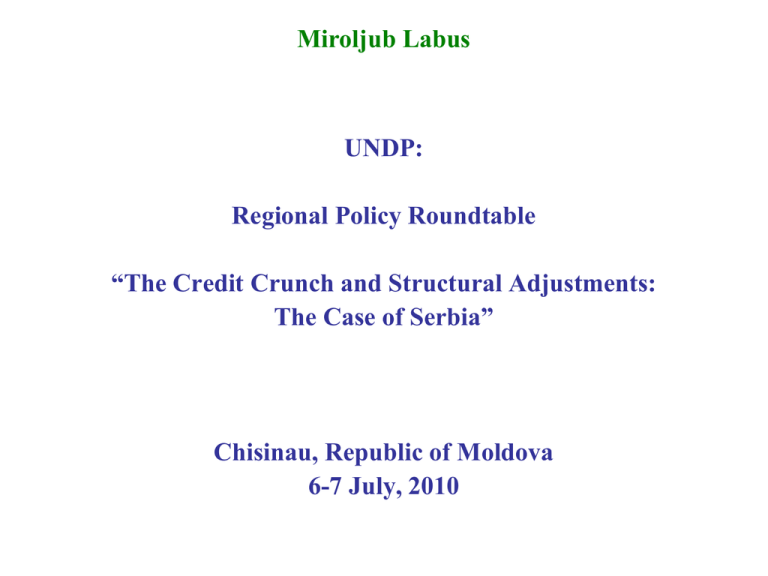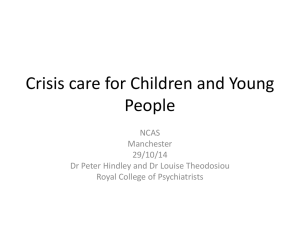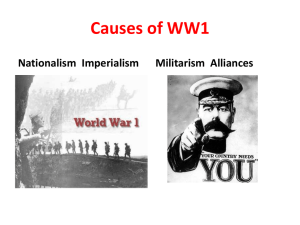Policy response: Macroeconomic policy measures
advertisement

Miroljub Labus UNDP: Regional Policy Roundtable “The Credit Crunch and Structural Adjustments: The Case of Serbia” Chisinau, Republic of Moldova 6-7 July, 2010 Crises and Policy Response in Serbia: An Overview Recession is over, but not the crises Nature of crises Credit crunch triggered a crises in Serbia, which looks like a typical suddenstop crises (Guillermo Calvo…) However, structural deficiencies would in any case cause a downturn Policy dilemma: Cure fundamental weaknesses or fight against recession by any means (structural or anti-cyclical approach)? Nature of policy responses Anti-cyclical fiscal measures, but pro-cyclical monetary measures (due to inflation challenges) Appropriate prudential and supervisory measures, which were not sufficient Weak structural measures International support: On time and timely (IMF, Vienna club of banks), but the EU integration has been postponed Politics: Weak government and poor policy coordination between the Government and the National bank Outline of Presentation Key macroeconomic figures Key policy measures Key structural deficiencies Politics of the crises responses Some concluding remarks Recession is over, but not the crises GDP growth rates Source: IMF Modest recession in Serbia, but recovery is not robust and certain… Source: Belox …since the labor marker is in a deep depression (unemployment rate is 19.2%) Macroeconomic Imbalances 25 20 15 percent 10 5 0 -5 2004 2005 2006 2007 2008 2009 2010 2011 2012 2013 2014 2015 -10 -15 -20 CAB Source: IMF Budget I-S Despite expected growth in 2010, reduction in macroeconomic imbalances will not continue After dramatic adjustment in 2009, current account deficit will increase in 2010 Fiscal deficit is also expected to get worse in 2010 Macroeconomic Challenges: Foreign Debt “Is there life after debt?” (The Economist) 24,000,000 Debt sustainability Total foreign debt Thousends od EUR 20,000,000 70% 60% Private foreign debt 16,000,000 50% 40% 30% 12,000,000 20% 10% 0% 8,000,000 2009 2010 2011 Debt service/gdp Public foreign debt 2012 2013 2014 2015 Debt service/reserve 4,000,000 I II III IV 2006 I II III IV 2007 I II III IV 2008 I II III IV 2009 I II III IV 2010 Source: NBS To borrow by the Government or not to borrow, it is the main dilemma Tight public debt policy might be relaxed in 2010… Source: IMF …but, is there a fiscal space for that? In any case, debt presents a challenge for foreign exchange stability in the future Policy response: Macroeconomic policy measures Measures Before crises During crises Fiscal measures Fiscal tightening No Easing Automatic stabilizers No Yes Not much Yes Subsidizing Monetary measures Reserve requirements Increased Unchanged Raised liquidity requirements Yes Unchanged Sterilization operation Yes Yes Exchange rate policy response Yes Yes Interest rate response No No Policy response: Administrative Measures in the Financial Sector Measures Before crises During crises Credit ceilings No No Capital control Short term capital Unchanged Reserve requirements measures Increased the required level Yes Unchanged Temporarily Abolished Differentiated by currency Yes Unchanged Differentiated by type of deposits Yes Unchanged Broaden the reserve base Yes Unchanged Marginal reserve requirements Policy Response: Prudential and Supervisory Measures Measures Before crises During crises Prudential measures Increase capital requirements Yes Unchanged Tighten assets classification rules Yes Unchanged Tighten provision rules Yes Unchanged Targeting unhedged borrowing Yes Unchanged Tighten net open position limits Yes Unchanged Loan to value related requirements for households Yes Unchanged Limits on eligibility based on income level of households Yes Unchanged Supervisory/monitoring measures Improving monitoring tools Yes Unchanged Stress testing No Yes Increase cooperation with home supervisors Yes Unchanged Tighten supervision on non-banks Yes Unchanged Structural Deficiencies: Serbia and Others Percent average 2004-08 Credit Default Swap Spread bps, May2010 120 12 600 100 10 500 8 400 80 60 6 40 200 4 20 0 300 100 2 SVK POL CZE HUN BiH MKD EST ALB LTU HRV ROM SER BGR LVA -20 0 0 Non-tradable Euroisation Saving Inflation,rhs Source: IMF Structural deficiencies in Serbia might be compared to other transition economies… Source: EBRD …but the country’s risk is much higher. Policy response: Structural Measures Deficiencies Measures State of Affairs Before crises During crises No Present Unchanged Privatization Controversial Postponed Reversed Euroisation Ineffective High due to a dual currency system Increased Low domestic savings No Present Some improvements Capital market development No Poor Unchanged Rigidity in labor market and poor incentive structure Ineffective Present Worsened De-industrialization/ Huge non-tradable sector Politics and Structural Governance EU accession is not any more a driver for institutional reforms Lack of full cooperation with the ICTY is more a formal excuse than a substantial reason for postponing the candidate status to Serbia The six-party coalition government is at the mid-term Institutional weaknesses: Strong President, with no legal authority over economic issues, and weak Government Poor policy coordination General public is in a bad mood, and tired of reforms March 2009 was the last momentum for structural reforms Is there now an opportunity for transition losers? Policy Lessons False optimism: Out of recession does not mean the end of economic crises Structural deficiencies undermined effectiveness of macroeconomic measures High prudential standards are not sufficient to prevent financial crises Coordinated international assistance proved to be of a high importance, but this is not a substitute for domestic reforms Those reforms depend on a stable and determined parliamentarian majority (two-party election system?) However, people’s frustration with the government might be the key barrier to such an end.











